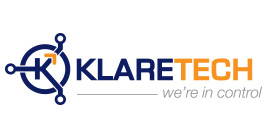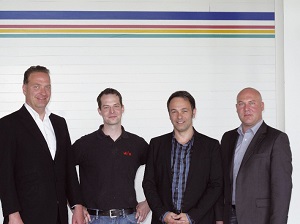How to wind up on top with B&R
METEOR can look back on decades of tradition in the construction of winding machinery. Automobile industry suppliers use their machines to produce ignition coils. The team of twelve generated a revenue of around 6 million Swiss francs in 2012, with the automotive sector representing about 60 percent of this total. METEOR sells around 60 winders each year, including three series of multi-spindle winders with standard models designed for coil widths ranging from 10 µm to 1.2 mm. Special applications can be developed for coil diameters up to 4.0 mm.

From outdated to integrated
n 2007, mechanical engineers Thomas Meier and Dr. Jörg Otzen took over METEOR as managing partners. They recognized the potential of the 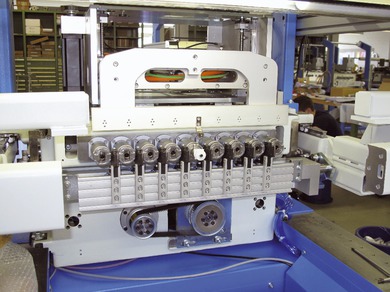 well-established brand and broad spectrum of products ranging from simple, manually operated single-spindle machines to complex, fully automated machines with multiple spindles. At the same time, they also saw that the existing automation solution was desperately outdated. With the winders driven by analog signals from external third-party axis controllers operating independently of the overall control system, the machines had severe limitations in terms of dynamics and precision. On top of that were the difficulties this caused when it came time to commission the machines and configure the axes. Another pain point was the HMI application: It was created in Visual Basic and ran on a Windows 98 operating system. The development environment was the PG 2000 – an early DOS-based PLC programming system – from B&R.
well-established brand and broad spectrum of products ranging from simple, manually operated single-spindle machines to complex, fully automated machines with multiple spindles. At the same time, they also saw that the existing automation solution was desperately outdated. With the winders driven by analog signals from external third-party axis controllers operating independently of the overall control system, the machines had severe limitations in terms of dynamics and precision. On top of that were the difficulties this caused when it came time to commission the machines and configure the axes. Another pain point was the HMI application: It was created in Visual Basic and ran on a Windows 98 operating system. The development environment was the PG 2000 – an early DOS-based PLC programming system – from B&R.
Dr. Jörg Otzen, Co-owner of METEOR"We have a lot of customers who will use a single coil type for up to five years. So a lot of customization goes into optimizing the coils and minimizing the cycle time. These recurring development costs are where the software basis provided by B&R really pays off." |
Data communication via POWERLINK
Meier and Otzen decided to invest in a new control system that would allow them to make the switch from NC to CNC. This would help achieve their goals for dynamics and precision while also giving them much more flexibility in designing the control software. The partners upgraded the automation hardware and software with the latest generation of B&R products, which deliver all the functionality they need and are perfectly suited for the type of open architecture they envisioned. The also added the real-time Ethernet POWERLINK protocol to provide data communication for the CNC environment. The control application that METEOR had already developed was applied with modules for machine operators. This would serve as a basis that could be continuously developed over time.
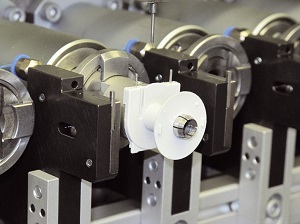
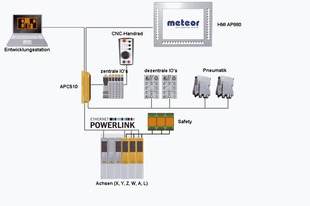 | 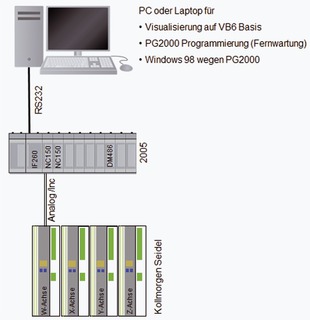 |
| New control system for winding machines with no hardware interfaces | By comparison: The old control system with hardware interfaces |
A race against time
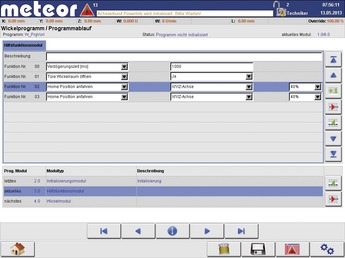 As soon as the first specifications were defined, B&R's certified "Qualified Partner" WITO Automation AG was on the job. WITO project manager Florian Egger assumed responsibility for METEOR's challenging project. He quickly determined that with B&R's system, WITO would be able to offer a solution tailored perfectly to the winders' needs. The project was kicked off in September 2009, just as an order came in from a large American ignition coil supplier for three winders to be integrated in a fully automated production line. At the 2010 Coil Winding exhibition in Berlin, the world's largest trade show for the industry, METEOR introduced the first machines with the new generation of controllers. The machines for the customer in the USA were delivered later that summer. "This was a brave move, because the machines needed to run perfectly from the very beginning, even though in reality they were still prototypes," adds Maier.
As soon as the first specifications were defined, B&R's certified "Qualified Partner" WITO Automation AG was on the job. WITO project manager Florian Egger assumed responsibility for METEOR's challenging project. He quickly determined that with B&R's system, WITO would be able to offer a solution tailored perfectly to the winders' needs. The project was kicked off in September 2009, just as an order came in from a large American ignition coil supplier for three winders to be integrated in a fully automated production line. At the 2010 Coil Winding exhibition in Berlin, the world's largest trade show for the industry, METEOR introduced the first machines with the new generation of controllers. The machines for the customer in the USA were delivered later that summer. "This was a brave move, because the machines needed to run perfectly from the very beginning, even though in reality they were still prototypes," adds Maier.
Easy operation with touch screen and teach-in mode
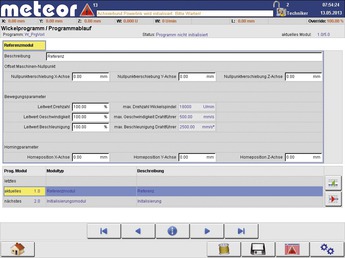 The new control solution has been very well-received. With a response time of only 400 µs, it offers the dynamics and precision necessary to handle highly complex applications, such as winding on a spiral with a slanted axis. Machine operators also have it considerably easier, with a convenient touch screen and the ability to configure axes with intuitive teach-in functions. The core benefit is the level of integration provided by the automation solution, engineered in B&R's Automation Studio development environment. This integrated platform allowed METEOR to unify control of the IP20 and IP67 I/O modules, operator HMI, motion control and CNC technology – while eliminating all unnecessary hardware interfaces at the same time.
The new control solution has been very well-received. With a response time of only 400 µs, it offers the dynamics and precision necessary to handle highly complex applications, such as winding on a spiral with a slanted axis. Machine operators also have it considerably easier, with a convenient touch screen and the ability to configure axes with intuitive teach-in functions. The core benefit is the level of integration provided by the automation solution, engineered in B&R's Automation Studio development environment. This integrated platform allowed METEOR to unify control of the IP20 and IP67 I/O modules, operator HMI, motion control and CNC technology – while eliminating all unnecessary hardware interfaces at the same time.
"Our customers rarely buy a machine off the shelf – they always need a custom design," explains Dr. Otzen with regard to the initial investment costs for the changeover. "As a result, we always have a certain amount of additional software development to do. We have a lot of customers who will use a single coil type for up to five years. So a lot of customization goes into optimizing the coils and minimizing the cycle time. These machines cost between 200,000 and 300,000 euros. Our low-end standard line, on the other hand, comes to around 70,000 euros. The recurring development costs are where the software basis provided by B&R really pays off."
|
|
| Dr. Jörg Otzen from METEOR, Florian Egger from WITO, Thomas Meier from METEOR and Thomas Furrer, B&R's Regional Sales Manager for German-speaking Switzerland (from left) |
Key ingredient in the recipe for success: Flexible programming
Dr. Otzen is convinced that the newly gained programming flexibility has played a significant role in the company's success. When the new partners took over METEOR in 2007, they were selling one multi-spindle winder per year – by 2012 the number had jumped to twenty. He attributes this growth in the upper price class to customer demand for new levels of software flexibility and the added value that comes with it.
Meier and Otzen cite the black box programming of the old solution as the greatest obstacle that had to be overcome. WITO project manager Florian Egger adds, "The old solution was a hodge-podge of different systems. And anyway, the switch from NC to CNC made migration impossible. Instead, we built a new control and HMI concept on the combined strength of METEOR's industry know-how and our system expertise. The new design was also informed by requests and experiences offered by customers, service technicians and process engineers. The result was an array of new functions that greatly simplified operation and optimized the winding process." Today, all parties are extremely satisfied with the solution that has helped propel METEOR to the forefront of the global winding machine market.
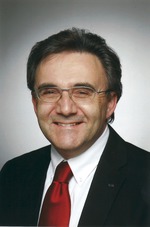 | Jürg Wittwer, CEO of WITO Automation AG "The 100% consistent development interface provided by Automation Studio, combined with the minimal response times possible with POWERLINK and the fully integrated CNC technology add up to a highly dynamic solution that is optimized for our industry. Our customers benefit from an intuitive operator interface that requires neither programming nor CNC expertise in order to put together a winding application."
|


